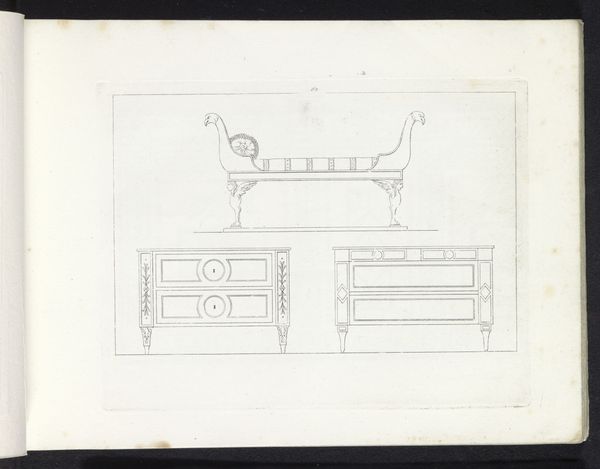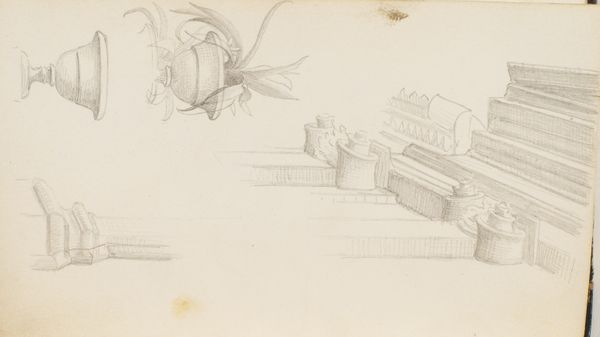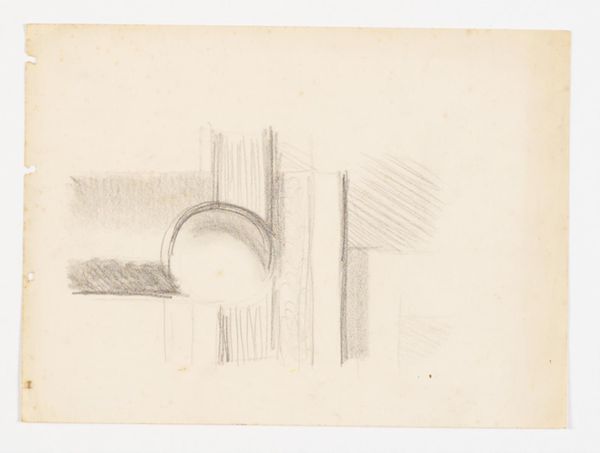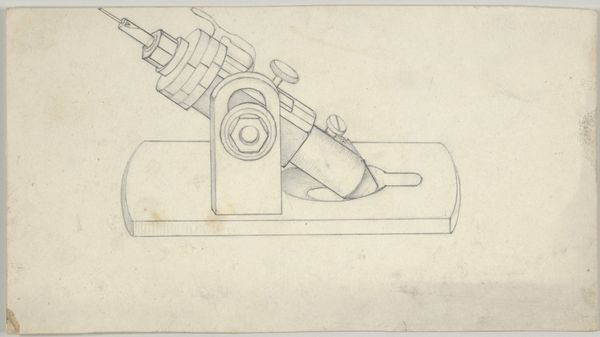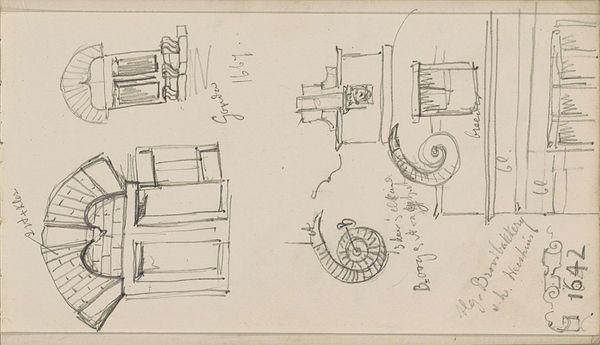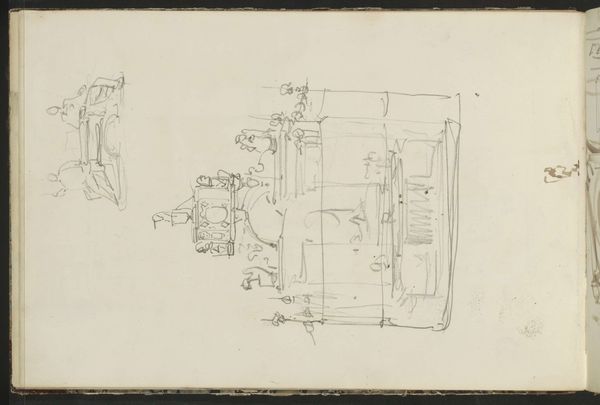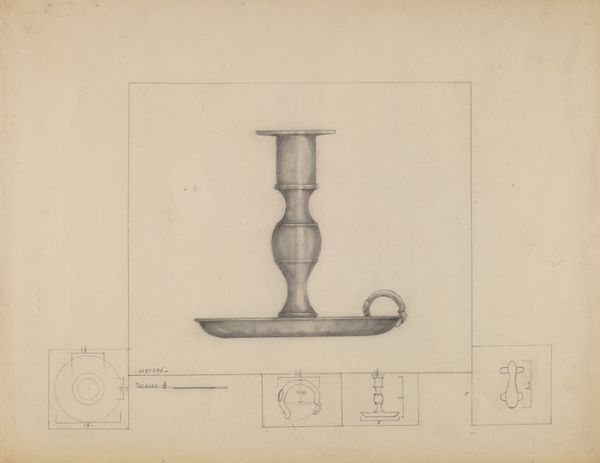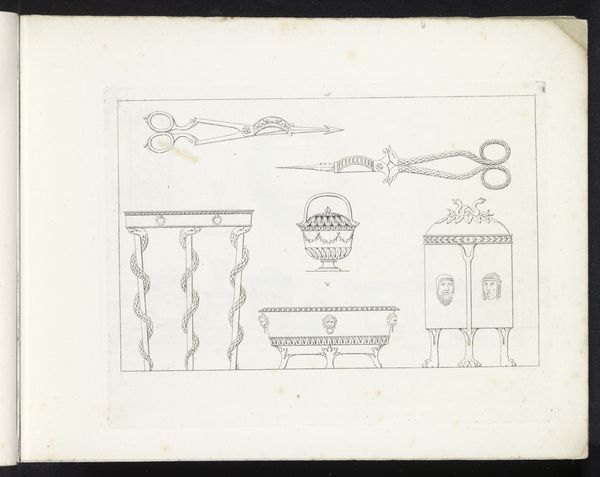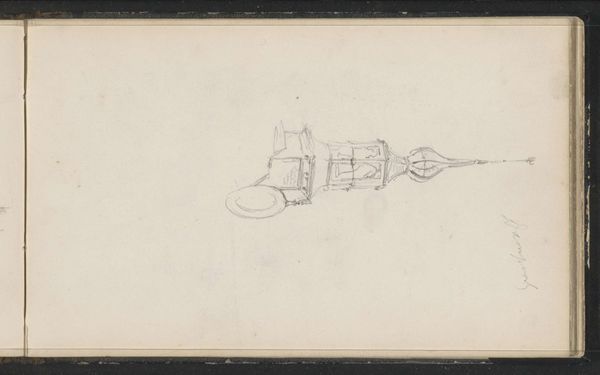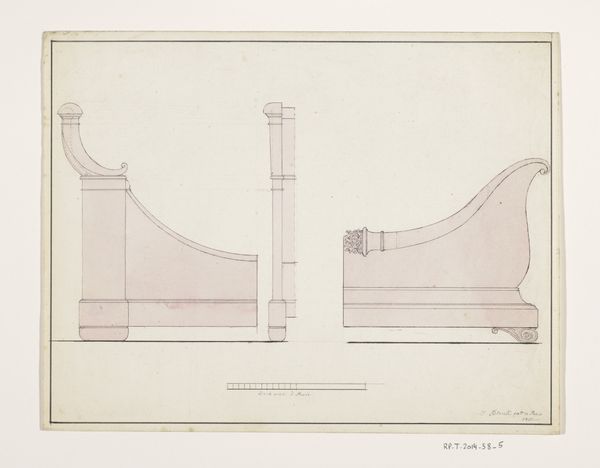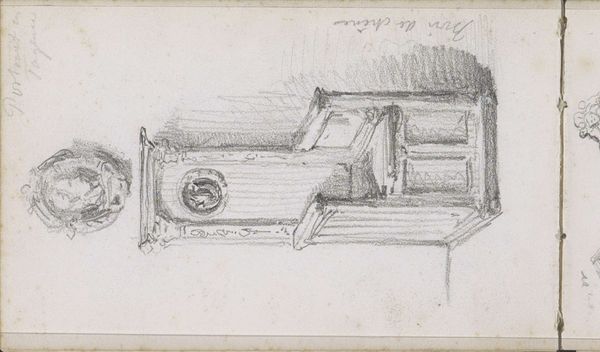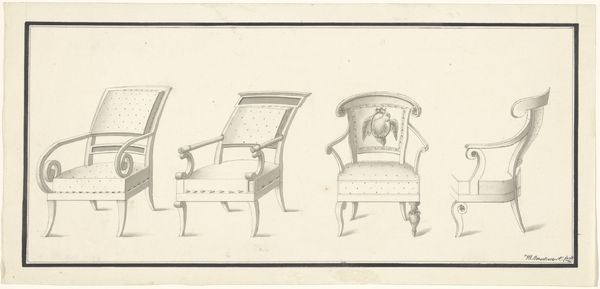
drawing, print, pencil
#
drawing
# print
#
pencil sketch
#
classical-realism
#
vessel
#
geometric
#
pencil
Dimensions: sheet: 4 9/16 x 6 7/8 in. (11.6 x 17.5 cm)
Copyright: Public Domain
Curator: Here we have "Design for a Vessel," an 18th-century pencil sketch, currently residing at the Metropolitan Museum of Art. It’s attributed to an anonymous artist. Editor: It’s striking. Even as a simple sketch, the implied weight and elegance are palpable. You can almost feel the smooth coolness of the stone. Curator: Absolutely. And that speaks volumes about the labor and intention behind even a preliminary sketch. The meticulous detailing suggests a high degree of skill but also reveals something about craft hierarchies of the time. Who had the privilege and access to create something like this? Who might have ultimately executed the finished object in stone or ceramic? Editor: Interesting. It's easy to forget how much labor goes into something that appears 'effortless'. Considering this was a design, who was its intended audience? What function was the vessel designed to fulfill, and for whom? Was it purely ornamental, a marker of status, or did it serve a more practical, domestic need? Curator: Exactly. And how might a design like this have perpetuated existing social structures? A vessel of this sort, realistically, wouldn't be found in just anyone's home. There’s a history of power and privilege embedded in those neoclassical motifs. This design embodies aspirations of elegance and order, values prized by a specific segment of 18th-century society. Editor: The clean lines, the almost mathematical precision, seem to almost remove any trace of the hand that shaped it, reinforcing that classical ideal of flawless beauty. Yet, it’s just a sketch, capturing only the first step in that labor process. We miss a story behind it. Curator: Precisely, and by engaging with the materiality and the process, we challenge the established artistic canons. We have to think critically about what those canons have historically excluded, what voices they've silenced. It isn’t just about aesthetic appreciation, it’s about understanding how these designs participate in broader social and political narratives. Editor: Examining its method, production, and eventual use adds a new layer of comprehension beyond a simple aesthetic experience. I will look at sketches with more care and caution. Curator: Indeed. By looking critically, even something as simple as an 18th-century design opens to be far more rich and rewarding.
Comments
No comments
Be the first to comment and join the conversation on the ultimate creative platform.
